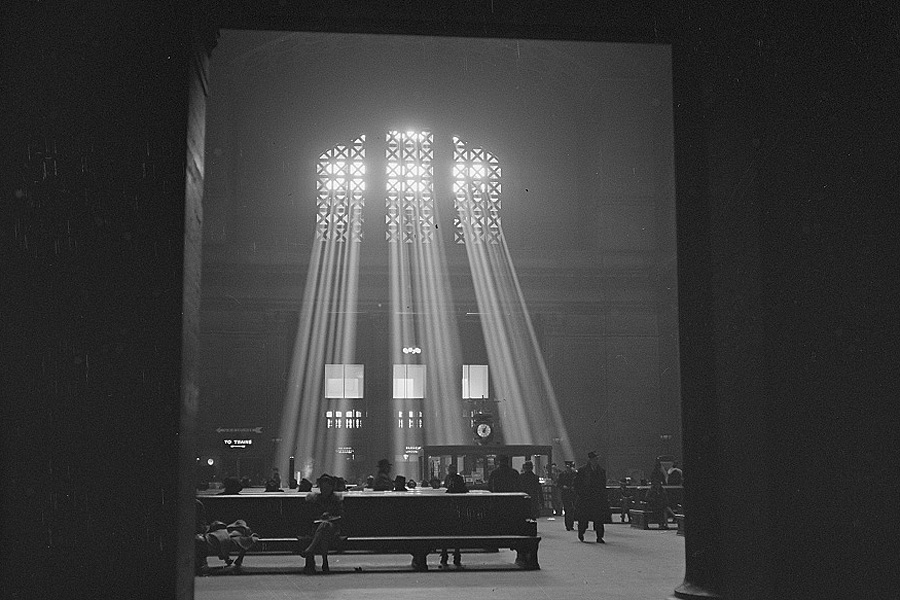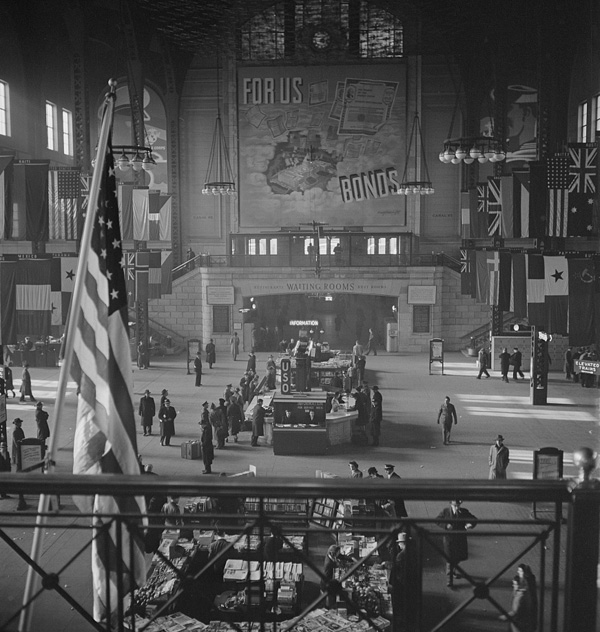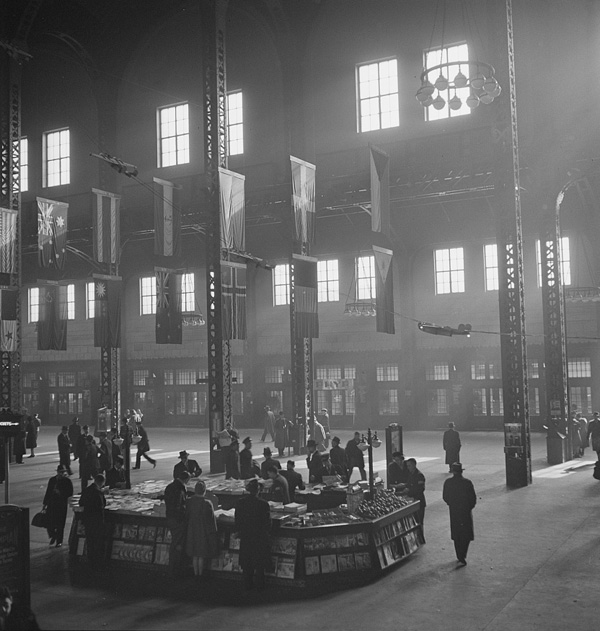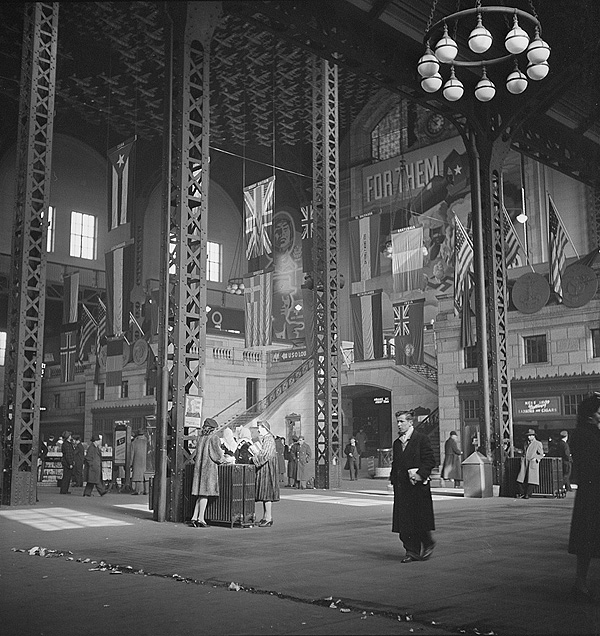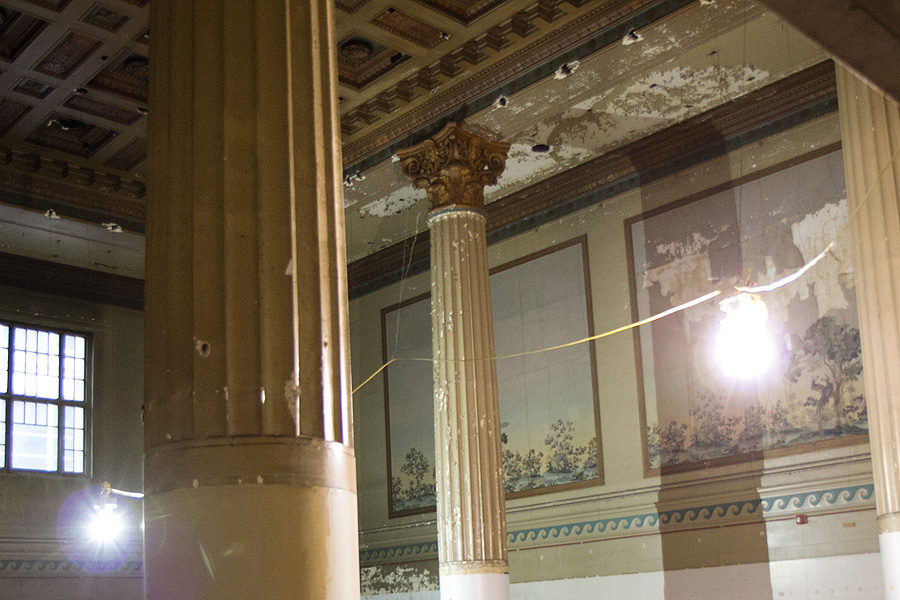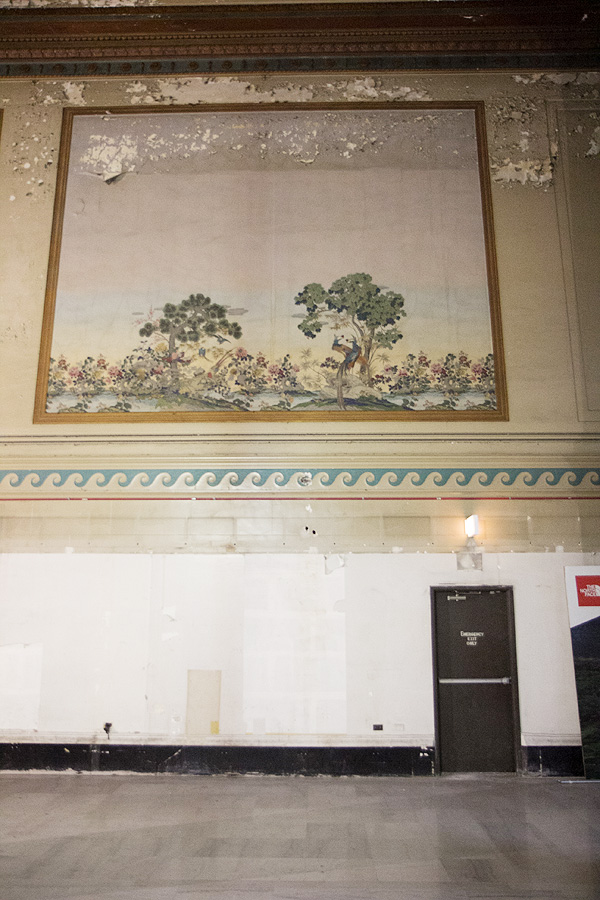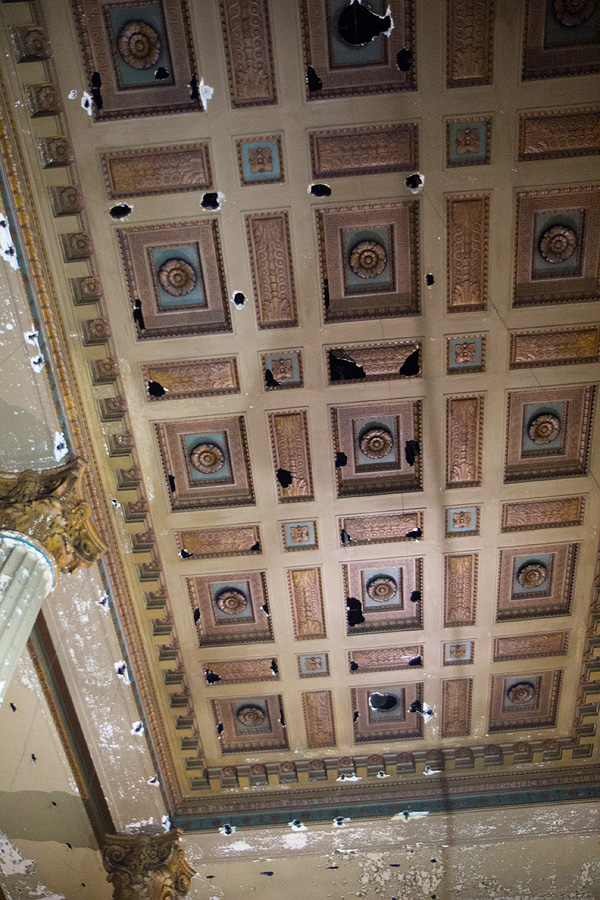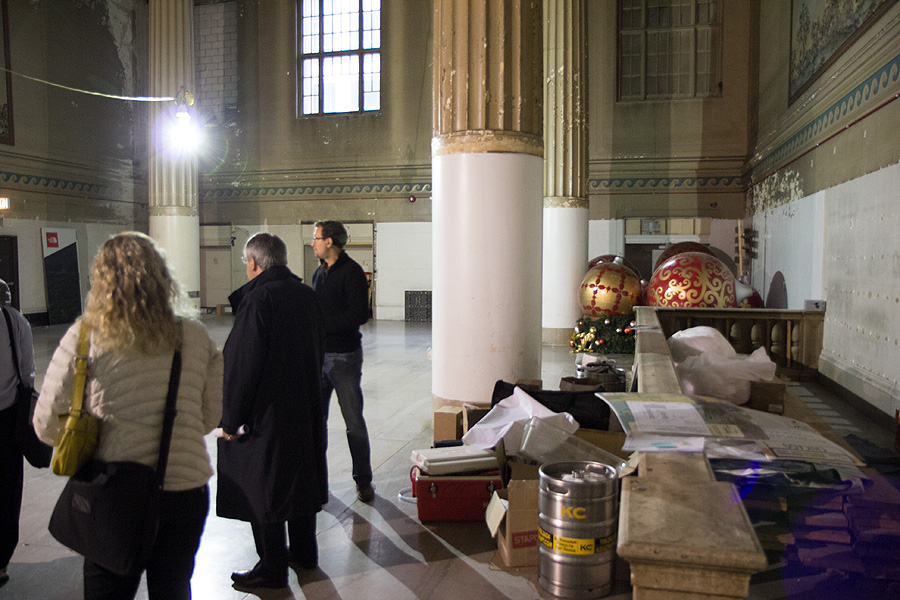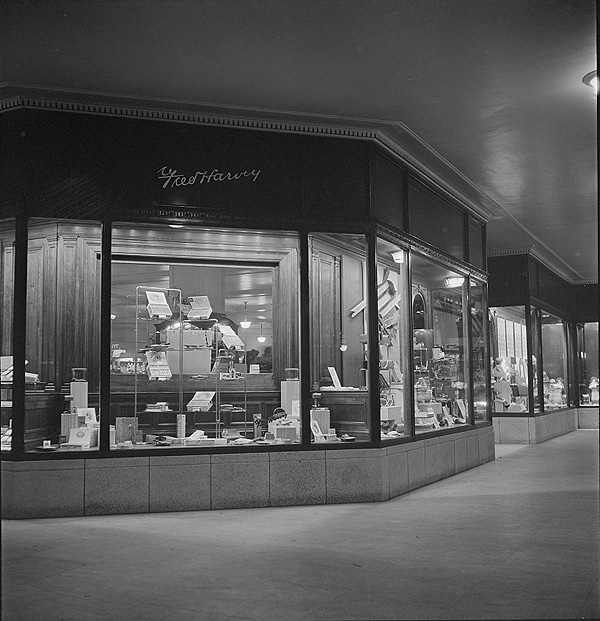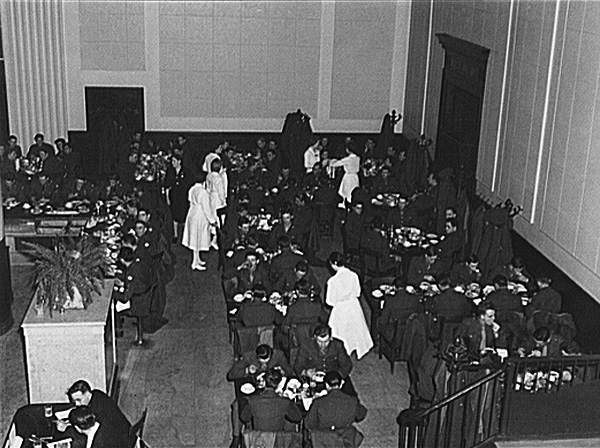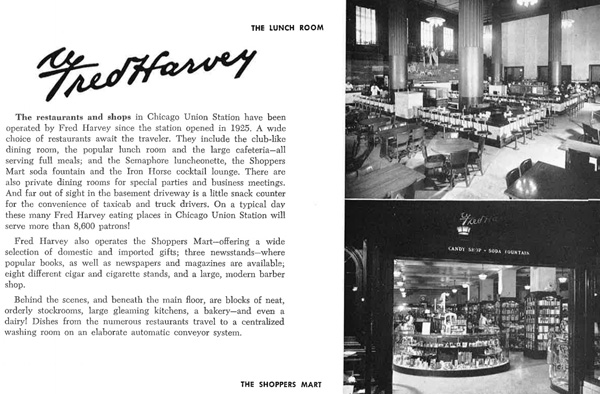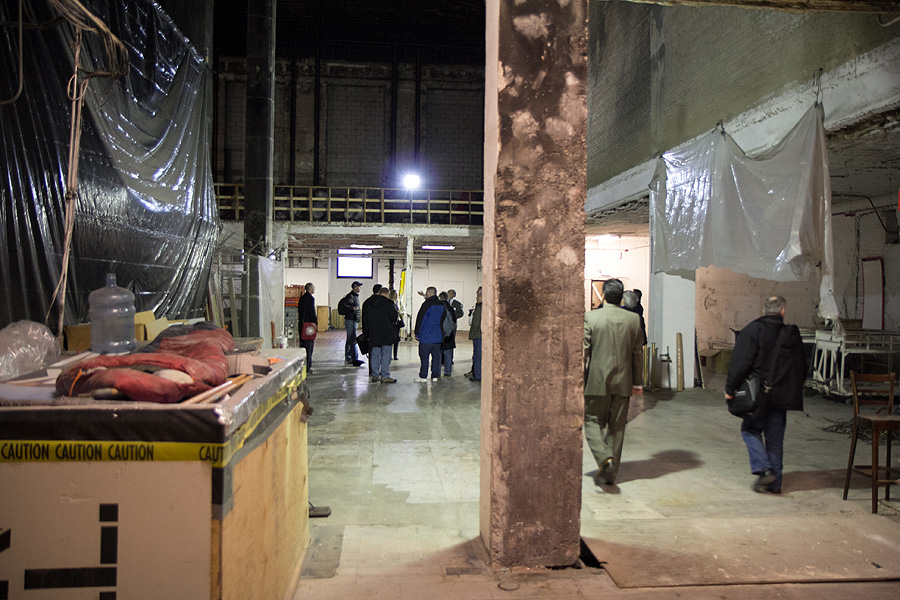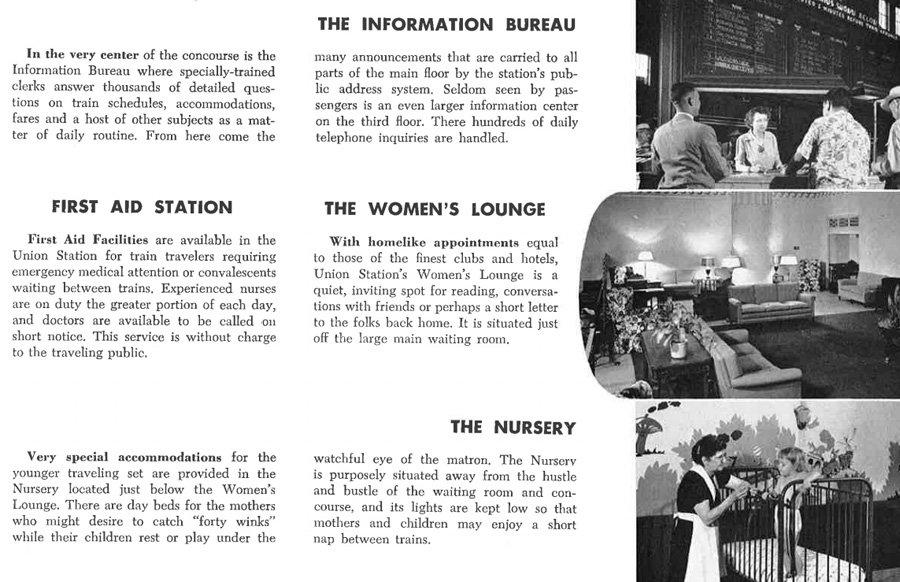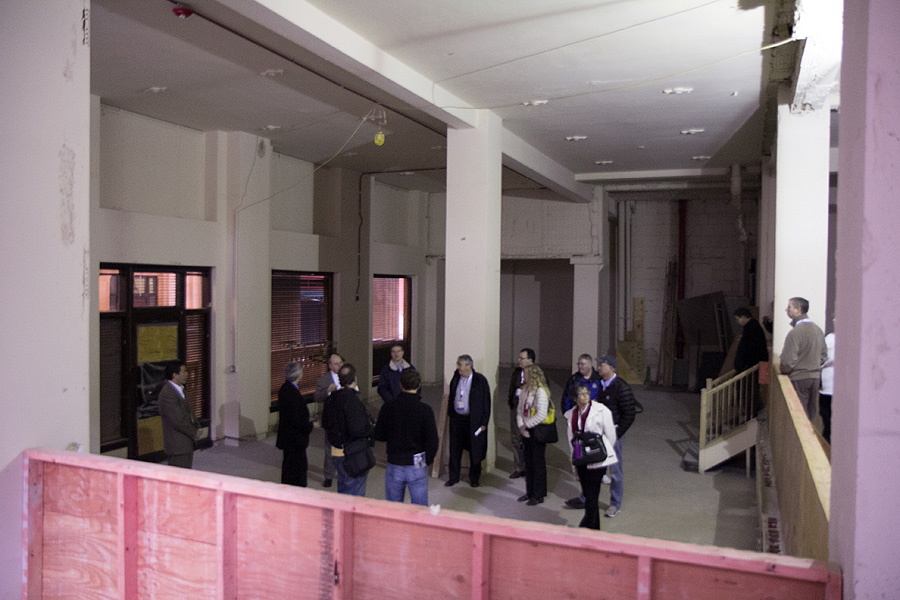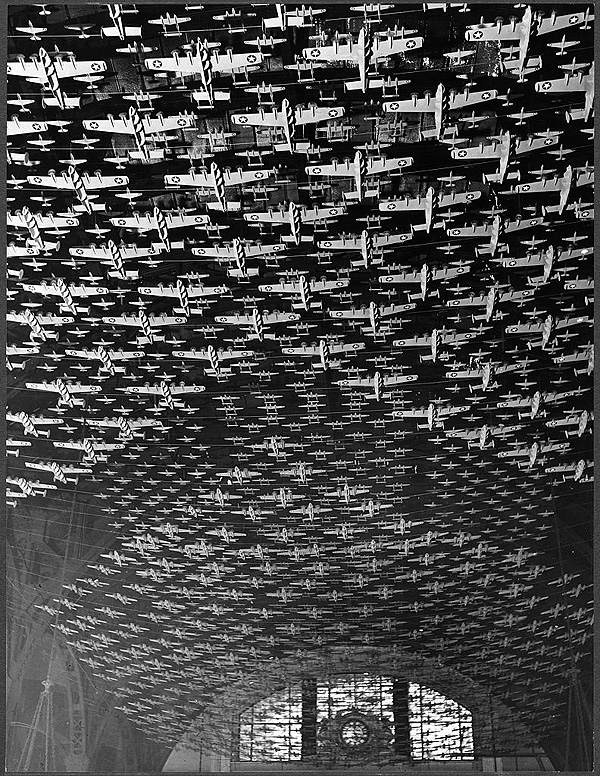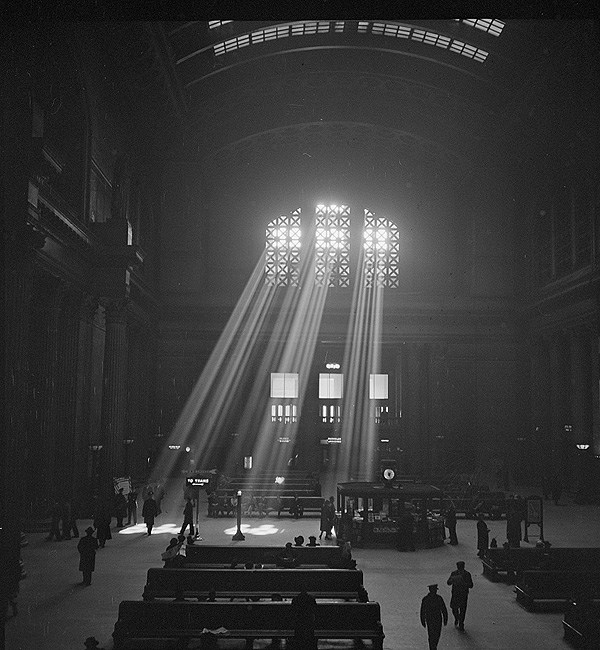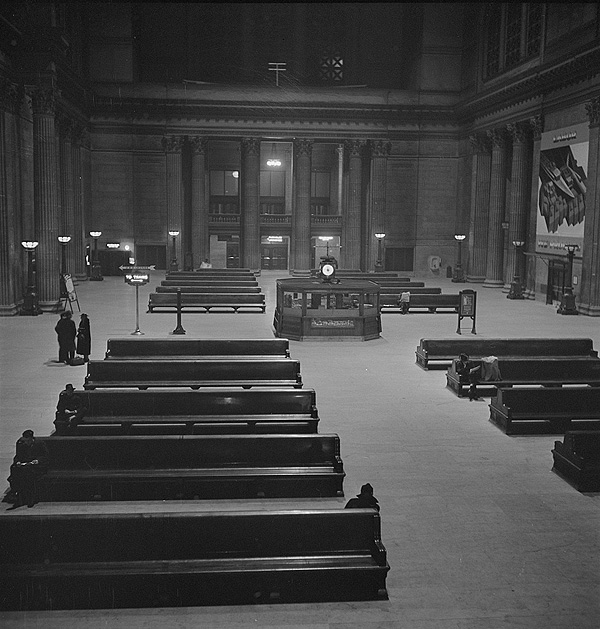The Great Hall in Union Station is famous. And it's famously empty. All that grandeur, constructed over a decade from some of Daniel Burnham's final designs, and the vast majority of its travelers end up crammed into a dim, claustrophobic maze of fast food joints that looks like a combination mall and air-raid shelter.
Greg Hinz of Crain’s recently got a fantastic tour of the "hidden Union Station"—700,000 square feet that used to be everything from high-end retail to a barbershop. It had been gorgeous; some of it, surprisingly, is still so.
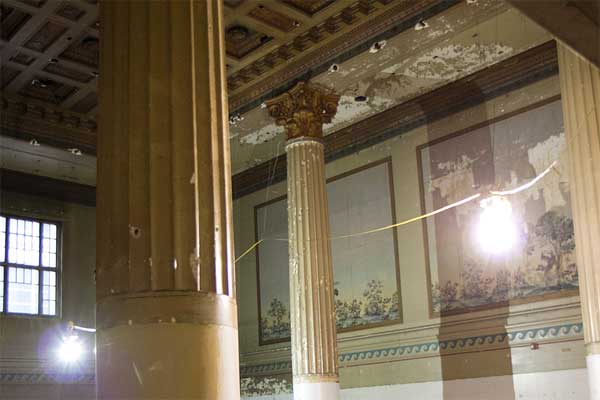
So what happened? In 1969, Penn Central Railroad, the majority owner at the time, demolished the Beaux-Arts concourse to build an office tower—now known as Fifth/Third Center—with a smaller, more modern concourse underneath. The reason behind the move was that ridership had fallen dramatically. Various references put the station's "heyday" in the 1940s, with 300 to 400 trains a day serving "close to 100,000" passengers, the Tribune reported in 1972, but that was likely inflated due to World War II. A Tribune report from 1946 puts a "normal" day's ridership at 51,753. When the Tribune ran a piece in 1972 with the foreboding title "Union Station Time Running Out," ridership was down to 30,000 per day and the station's general manager was floating the possibility that the Great Hall itself, then just 47 years old, could be torn down. Various parts of the station slowly closed down to the public.
But then a funny thing happened. Two years later, in 1974, the Regional Transportation Authority was created, and it began to knit together and rehabilitate the region's private commuter-rail lines. All the lines were organized under the Metra name in 1984. Since then?
Here's a chart from a 2014 Metra report showing the increase in ridership, in millions of riders:
Metra System Annual Ridership (in Millions)
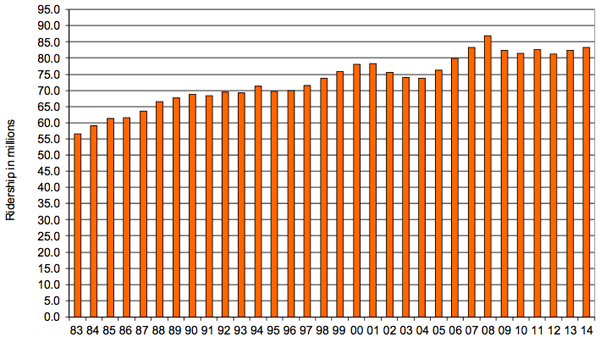
Not all those are Union Station tracks, but all six Metra lines going to and from Union Station increased ridership over 30 years, according to the agency. The BNSF line added about six million riders per year to the total; the Milwaukee-North line doubled, from about 3.5 million to about 7 million per year.
But as Robert Munson writes at the Urbanophile:
The causes [of why Union Station declined] are mid-century mistakes made when we thought inter-city train ridership would decline further and, hence, the Station could downsize. All inter-city travel lost from its 1940s peak has been replaced by commuter ridership, plus another 20% daily ridership in this century. Union Station’s concourse overflows with passengers and cannot catch up with the times. The Station that helped make Chicago the nation’s train center now holds Chicago back.
Which reflects a Tribune editorial from 1984: "The [design] mistake was made in the late 1960s when the passenger concourse—the access by riders to the train platforms—was redesigned and rebuilt as a commuter facility and packed with concessions and restaurants on the assumption that inter-city passenger trains were dying."
Not just "redesigned and rebuilt," though: When the concourse, pictured here just a couple months before its demolition, was replaced with a skyscraper, it left “the head house somewhat orphaned," according to The Architect's Newspaper.
The exact same thing happened to New York's Penn Station a few years before, as documented in a great episode of the radio show 99% Invisible, the title of which should resonate: "Penn Station Sucks." Architectural historian Vincent J. Scully's memoriam for it should also resonate: "One entered the city like a god; one scuttles in now like a rat."
Union Station split the difference, as the Great Hall, despite its relative lack of use, remains grand, and the Art Deco–themed 1990s renovation led by Lucien Lagrange echoes the glamor of the past. But as one scurries along through its underground maze—press a button, get a tallboy of Half Acre Daisycutter—it's hard not to lament what once was.
According to Jon Hilkevich, the average weekday traffic in Union Station is now up to around 50,000—equal to its postwar peak. Ridership on Amtrak is growing along with Metra use. That the bulk of use has shifted over the decades from long-distance to commuter trains means it may never get the leisurely use of the past, but it appears some of Union Station may come back into the light: Amtrak announced in June that it will renovate the station once again, with plans to open some of that unused space to the public.



